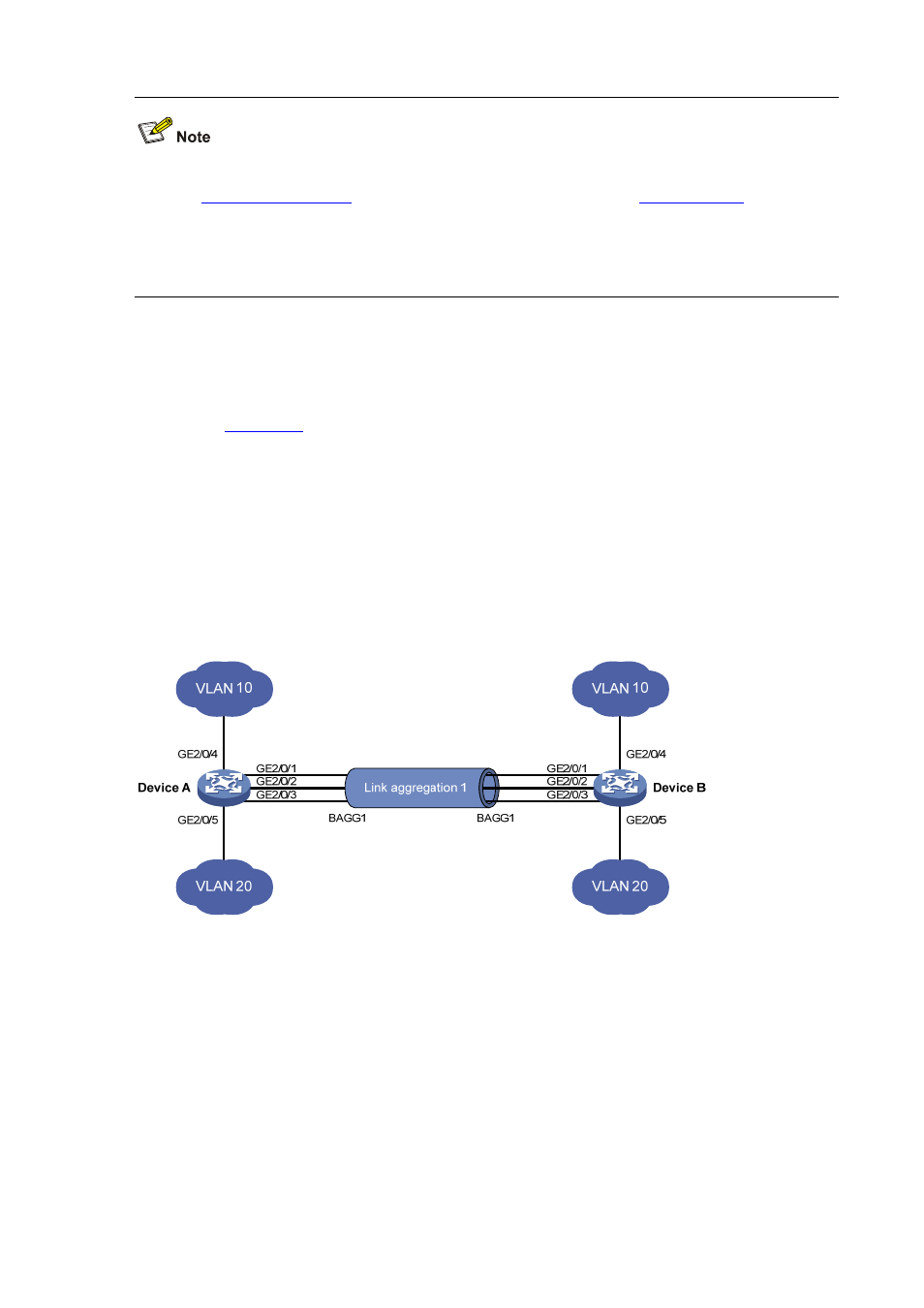Static aggregation configuration example, Network requirements, Configuration procedure – H3C Technologies H3C S7500E Series Switches User Manual
Page 143

11-19
In an aggregation group, only ports that have the same port attributes and class-two configurations
(see the
section) as the reference port (see the
section) can
operate as selected ports. Therefore, you must ensure that all member ports have the same port
attributes and class-two configurations as the reference port. The other settings only need to be
configured on the aggregate interface, not on the member ports.
Static Aggregation Configuration Example
Network requirements
As shown in
Device A and Device B are connected through their respective Layer 2 Ethernet interfaces
GigabitEthernet 2/0/1 through GigabitEthernet 2/0/3.
Configure a Layer 2 static link aggregation group on Device A and Device B respectively, enable
VLAN 10 at one end of the aggregate link to communicate with VLAN 10 at the other end, and
VLAN 20 at one end to communicate with VLAN 20 at the other end.
Enable traffic to be load-shared across aggregation group member ports based on source and
destination MAC addresses.
Figure 11-6
Network diagram for static aggregation
Configuration procedure
1) Configure
Device
A
# Create VLAN 10, and assign port GigabitEthernet 2/0/4 to VLAN 10.
<DeviceA> system-view
[DeviceA] vlan 10
[DeviceA-vlan10] port gigabitEthernet 2/0/4
[DeviceA-vlan10] quit
# Create VLAN 20, and assign port GigabitEthernet 2/0/5 to VLAN 20.
[DeviceA] vlan 20
[DeviceA-vlan20] port gigabitEthernet 2/0/5